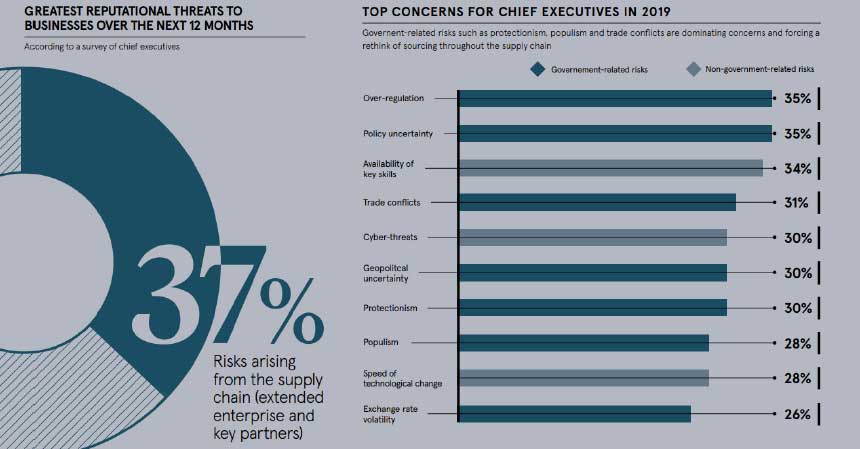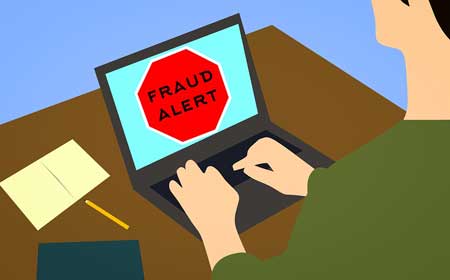Any successful Brands are immediately copied and launched in the market. Counterfeit products are a big issue. It takes a year of litigation to fight the issue. Like in Construction Products, products are branded with the name of the product. But companies Copy the headmark and launch duplicate fasteners with the same headmark.
The reason for this is
- The law is complex.
- The owners lack the knowledge to complete the process of a trademark.
Unscrupulous people just copy the look alike. without delivering the Quality the original product offers. Given below is the analysis of how product counterfeit works in the corporate world.
When you are walking along the boardwalk on vacation, you know it’s a “buyer beware” type of situation when you buy directly from a street vendor.
Those Cuban cigars are probably not Cubans, the Louis Vuitton bag is a cheap replica, and the Versace sunglasses too cheap to be the real thing.
But what if you placed an order for something you thought was truly legitimate, and the fake brand had you fooled? What if this imitation product fell apart in a week, shortcircuited, or even caused you direct harm?
Can you Spot a Fake?
Today’s infographic comes to us from Best Choice Reviews, and it highlights facts and figures around counterfeit goods that are passed off as quality brands, and how this type of activity damages consumers, businesses, and the wider economy.

In 2018, counterfeit goods caused roughly $323 billion of damage to the global economy.
These fake products, which pretend to by genuine by using similar design and packaging elements, are not only damaging to the reputations of real brands – they also lead to massive issues for consumers, including the possibility of injury or death.
A Surprisingly Widespread Issue
While it’s easy to downplay the issue of fake goods, it turns out that the data is pretty clear on the subject – and counterfeit goods are finding their way into consumer hands in all sorts of ways.
More than 25% of consumers have unwillingly purchased non-genuine goods online – and according to a test by the U.S. Government Accountability Office, it was found that two of every five brand name products they bought online (through 3rd party retailers) were counterfeits.
Some of the most common knockoff goods were as follows:
- Makeup – 32%
- Skincare – 25%
- Supplements – 22%
- Medication – 16%
Aside from the direct impact on consumers and brands themselves, why does this matter?
The Importance of Spotting Fakes
Outside of the obvious implications, counterfeit activity can open up the door to bigger challenges as well.
Economic Impact: – On a macro scale, the sale of counterfeit goods can snowball into other issues. For example, U.S. accusations of Chinese manufacturers for stealing and reproducing intellectual property has been a major driver of tariff action.
Unsecure Information: – Counterfeit merchants present higher risks for credit card fraud or identity theft, while illegal download sites can host malware that steals personal information
Criminal Activity: – Funds from illicit goods can also be used to help bankroll other illegal activities, such as extortion or terrorism.
Unsafe Problems: – It was found that 99% of all fake iPhone chargers failed to pass critical safety tests – and 10% of medical products are counterfeits in developing countries, which can raise the risk of illness or even death.
The issue of fake goods is not only surprisingly widespread in the online era, but the imitation of legitimate brands can also be a catalyst for more serious problems.
As a consumer, there are several things you can do to increase the confidence in your purchases, and it all adds up to make a difference.
The Reputational Risks That CEOs are Most Worried About

Building an enduring business isn’t easy work.
It can take decades to earn trust and respect in a given market, and it only takes one terrible miscue to unravel all of that goodwill.
As a result, it’s no surprise that the world’s best CEOs think a lot about evaluating these kinds of risks. So what do executives see as being the biggest reputational risks lingering over the next 12 months for their businesses?
Risky Business
Today’s infographic comes to us from Raconteur, and it breaks down the near-term reputational risks seen by CEOs as based on research by Deloitte.
The concerns highlighted in the survey fall into three major categories:
- Security risks: including physical and cyber breaches (41%)
- Supply chain: risks arising from extended enterprise and key partners (37%)
- Crisis response capabilities: how the organization deals with crises (35%)
Let’s dive a little deeper, to see why these broad areas are such a concern.
Security Risks
As more people work remotely, CEOs see a rising risk stemming from data breaches.
Although 89% of the C-suite believes that employees will do everything they can do to safeguard information, about 22% say their employees aren’t aware of offsite data policies. The devices most at risk, according to this group, are company mobile phones (50%), company laptops (45%) and USB storage devices (41%).
Supply Chain Risk
When it comes to maintaining the quality of your product or service, it’s not optimal to be reliant on third-parties.
However, it’s also unlikely for companies to be fully vertically integrated – somewhere along the way, you need to get raw materials from a supplier, or you need to rely on a logistics company to deliver your goods to market. The more borders that need to be crossed, and the further an item has to go, the more complicated it all gets.
In terms of supply chain risk, CEOs are mostly concerned about government action (or inaction): uncertainty about policy, over-regulation, trade conflicts, geopolitical uncertainty, and protectionism were all items that registered high on the list.
Crisis Management
It pays to be prepared when it comes to crises.
The only problem? It would seem the data that C-level execs need to make emergency decisions is not up to snuff. For example, 95% of CEOs see customer and client data as being necessary in such a situation, but only 15% of companies are successfully collecting such data.
The same gap seems to occur when it comes to other types of data, including brand reputation data, financial forecasts and projections, employee needs and views, industry peer benchmarking, and supply chain data.
Visualizing the Potential of Smart Mining
Mining has traditionally been depicted with pack mules, pickaxes, and rugged prospectors.
However, it may surprise you to learn that today’s mining industry is precisely the opposite in almost every respect. It’s high-tech, efficient, and safe.
This is partially because modern mining companies are deploying the latest in sensor and cloud technology. These connected mines are improving the extraction process and workers’ safety while also boosting productivity.
Today’s infographic comes to us from Natural Resources Canada and discusses how this sensor and cloud technology can be integrated into the extractive process.
What is Smart Mining?
A connected mine uses data from sensor technology to effectively manage underground and pit mining operations.
From a single application on a mobile device, supervisors at mine sites can now receive alerts via SMS, email or in-app notifications. This helps them react to critical problems in real-time and maximize productivity.
In addition, advanced data analytics can be applied to the raw data to create insights, visualizations, and recommendations. This information is delivered to mine managers and employees in real-time on their mobile devices.
Case Study: Smart Solutions in Practice
Dundee Precious Metals was one of the first companies to bring wireless networks into an underground mine. The company used RFID and Wi-Fi to monitor the location of equipment and people. The networks also allowed personnel to stay connected to the surface.
Once the networks were installed, communication was reliable and instantaneous – even almost 2,000 feet underground at the bottom of the mine. Workers could bring laptops and smartphones into the mine to stay connected to personnel and software on the surface.
With an RFID chip on every vehicle, machine, and person, managers can see the location of everyone and everything in the mine. This helps prevent accidents and breakdowns, and streamlines operations in real-time.
There are also environmental and cost-saving benefits. Using location data, an automated ventilation system can respond and minimize energy consumption.
Fans turn on and off as miners enter or leave an area. In addition, fan speeds adjust when machines or vehicles are running nearby to ensure that emissions are properly vented. This could drastically reduce a mine’s energy requirements.
Changing the Nature of Work: Remote Working
These smart mining solutions are reducing the risks miners face and creating new opportunities for a tech-savvy generation.
Remote mine locations that revolve around shift work can place stress on workers and their families. With a connected infrastructure, mine employees and managers can monitor operations at a distant office.
There will always be a need for workers on site, but connected technology can create some town-based career opportunities and help stabilize families.
A Sustainable Future for Mining
This is just the beginning.
Over time, data from sensor technology and cloud software, will reveal insights that could help develop sustainable mining operations.
By minimizing their negative impacts, mining companies will be able to responsibly deliver the materials the modern world needs.
Source
- https://www.bestchoicereviews.org/cost-of-counterfeits/
- https://www.visualcapitalist.com/history-u-s-trade-wars/
- https://www.consumerreports.org/cro/2012/06/how-to-spot-counterfeits/index.htm
- https://www.raconteur.net/infographics/risky-business-the-importance-of-reputation
- https://www.nrcan.gc.ca/home
- https://www.cbc.ca/news/canada/north/mobile-workers-guidebook-fly-in-workers-1.4359199
Author: Hitesh Parmar, General manager, REALM Intermediates P Ltd.
Website: – www.realmindia.com

